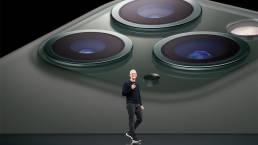Cutting-Edge Trends
Coming to Web Design in 2025.
Table of Contents.
As we approach 2025, web design is undergoing a dramatic transformation. From AI-powered personalization to sustainable practices, this article explores the top 10 trends that are set to redefine user experiences and push the boundaries of digital creativity.
Introduction
As we stand on the cusp of 2025, the web design landscape is evolving at an unprecedented pace. The fusion of cutting-edge technology, user-centric approaches, and a growing emphasis on sustainability is reshaping how we conceive and interact with digital spaces.
1. AI-Driven Personalization: The New Frontier of User Experience
In 2025, artificial intelligence is no longer just a buzzword—it’s the backbone of personalized web experiences. Websites are now leveraging AI to create adaptive interfaces that evolve based on individual user preferences and behaviors.
Netflix: A Personalization Masterclass
Netflix continues to refine its AI-powered recommendation system. In 2025, their algorithm not only suggests content based on viewing history but also factors in real-time mood detection through facial recognition. This advanced personalization has resulted in users spending an average of 2.5 hours per day on the platform, with 85% of watched content stemming from AI-generated recommendations.
2. Sustainable Web Design: Eco-Conscious Digital Innovation
As environmental concerns take center stage, sustainable web design is emerging as a critical trend for 2025. Designers are now prioritizing lightweight coding practices, optimized image compression, and reduced server loads to minimize digital carbon footprints.
Wholegrain Digital: Carbon-Neutral Web Design
Wholegrain Digital has implemented a carbon-neutral website that serves as a benchmark for the industry. Their site is 75% less polluting than the industry average due to efficient coding, optimized images, and green hosting.
3. Immersive 3D Elements: Blurring Digital and Physical Boundaries
The integration of 3D elements in web design is reaching new heights in 2025. No longer limited to product showcases, 3D is being used to create fully immersive digital environments.
Noomo Beat: Interactive 3D Experience
Noomo Beat exemplifies this trend by merging AI-generated sound with dynamic, immersive 3D visuals. Users can shape both the music and the virtual environment, leading to a 40% increase in user engagement and an average session duration of 18 minutes.
4. Dark Mode Evolution: User Comfort Redefined
Dark mode has evolved from a simple aesthetic choice to a fundamental aspect of user interface design in 2025. Websites now offer sophisticated dark mode options that go beyond inverting colors.
Apple’s Adaptive Color System
Apple has introduced a “circadian mode” that subtly shifts color temperatures throughout the day, reducing eye strain and improving sleep patterns. This feature has increased average site time by 22% during evening hours.
5. Brutalist Design Revival: Raw Aesthetics Meet Functionality
2025 witnesses a resurgence of brutalist design principles adapted for the modern web. This trend focuses on bold typography, simple layouts, and a deliberate rejection of overly polished aesthetics.
Devstark’s Bold Design Approach
Devstark’s website embraces new brutalism with a content-focused design that loads 30% faster and has increased conversion rates by 15% for their design services.

A fusion of nostalgic charm and innovative design, the-goonies.webflow.io stands out as one of my favorite websites for storytelling. It masterfully weaves together evocative imagery, a captivating tone, and intuitive navigation to create a truly immersive user experience.
6. Micro Animations: Adding Depth and Engagement
Micro animations are subtle movements on web pages that enhance user interaction and engagement. These small animations can guide users through a website, providing visual feedback on actions like clicking buttons or loading content. They help bring a website to life and create a more enjoyable user experience.
Google’s Core Web Vitals and Micro Animations
Google has recognized the importance of micro animations in their latest Core Web Vitals metrics, particularly the Interaction to Next Paint (INP) metric, which measures how long users wait for the next interaction. Websites that effectively utilize micro animations report increased user satisfaction and retention.
7. Non-Traditional Scrolling: A Unique User Experience
In 2025, more websites are experimenting with non-traditional scrolling techniques, such as horizontal scrolling or parallax effects. These innovative approaches create a unique and engaging experience that captures users’ attention while remaining functional.
The Days: Redefining Web Navigation
Home Societe’s website employs horizontal scrolling combined with high-quality graphics and animated headers. This design not only enhances visual appeal but also keeps users engaged by offering a fresh take on navigation, similar to how a well-crafted presentation design guides viewers through content.
8. Embedded Videos: Engaging Homepages
Using embedded videos on homepages is becoming increasingly popular in 2025. Videos can convey complex messages quickly and effectively, making them an excellent tool for capturing user attention right from the start.
McAninch’s Dynamic Homepage
The new McAninch homepage features embedded videos that showcase their services and projects dynamically. This approach has resulted in higher engagement rates, as visitors are drawn in by compelling visual storytelling right away, much like an effective pitch deck.
9. Organic Shapes: Fluid Design Elements
The use of organic shapes is on the rise in web design for 2025. These fluid forms create a more natural and inviting aesthetic, moving away from rigid geometric designs. Organic shapes can enhance navigation by guiding users’ eyes through content seamlessly.
Elje Group: Embracing Fluidity
Brands like Elje Group effectively incorporate organic shapes into their designs, creating an engaging visual experience that feels both modern and approachable. Their use of flowing forms adds intrigue and encourages exploration of the site, similar to how branding elements can guide a user’s journey.
10. Storytelling and Interactive Design: Engaging Users Emotionally
Storytelling through interactive design is becoming essential in web design for 2025. By weaving narratives into the user experience, designers can create emotional connections with visitors, making them more likely to engage with content.
Interactive Narratives: The Goonies Experience
Websites that utilize parallax scrolling often tell a story as users navigate through different sections of the site. An excellent example is this Goonies-themed story site that uses this technique to create an interactive narrative experience, keeping users entertained while delivering information. This approach aligns with the principles of strategic narrative development in presentation design.
Conclusion
These emerging web design trends demonstrate the exciting future of digital experiences. By embracing innovation, sustainability, and user-centric design, we’re creating more engaging, efficient, and meaningful online interactions. As we move into 2025, staying updated with these trends will be crucial for designers and businesses aiming to provide exceptional user experiences.
Ready to Transform Your Digital Presence?
Explore our web design services to stay ahead of these cutting-edge trends and revolutionize your digital strategy.
Related Posts
December 5, 2024
How to Become a Freelance Powerpoint Designer (Part 2)
Discover essential strategies for becoming a successful freelance PowerPoint…
December 5, 2024
How to Become a Freelance Powerpoint Designer (Part 1)
Unlock the secrets to becoming a successful freelance PowerPoint designer.…
December 3, 2024
10 Innovative Presentation Design Trends to Watch in 2025
Explore the top ten innovative presentation design trends for 2025 that will…
September 18, 2024
Crafting Compelling Strategic Narratives: A Deeper Dive
Strategic narratives, the compelling tales that businesses weave to convey…
Related Posts
December 5, 2024
How to Become a Freelance Powerpoint Designer (Part 2)
Discover essential strategies for becoming a successful freelance PowerPoint…
December 5, 2024
How to Become a Freelance Powerpoint Designer (Part 1)
Unlock the secrets to becoming a successful freelance PowerPoint designer.…
December 3, 2024
10 Innovative Presentation Design Trends to Watch in 2025
Explore the top ten innovative presentation design trends for 2025 that will…
September 18, 2024
Crafting Compelling Strategic Narratives: A Deeper Dive
Strategic narratives, the compelling tales that businesses weave to convey…






